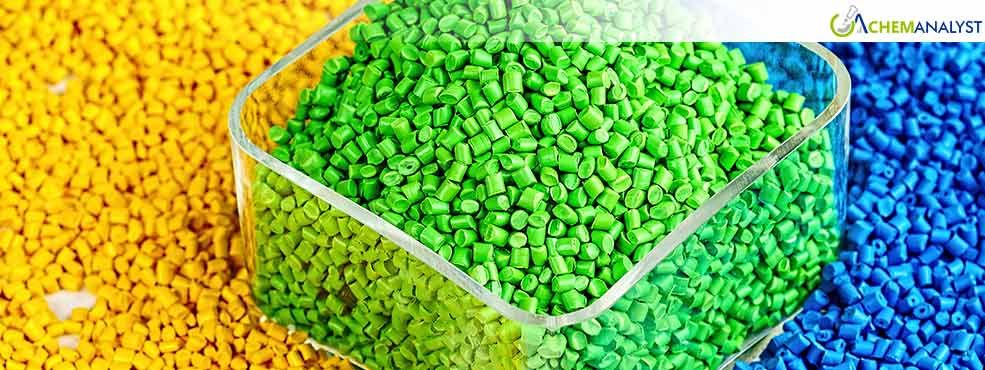China’s PP Market Struggles as Tariffs and Weak Demand Weigh on Prices
- 28-Apr-2025 8:00 PM
- Journalist: Stella Fernandes
Polypropylene (PP) prices across the Asian market have continued to exhibit a bearish market situation as April 2025 draws to a close, pressured by persistently weak demand fundamentals and abundant supply conditions. In China, uncertainty surrounding PP production costs has intensified due to escalating trade tensions between the United States and Mainland China. The situation worsened after the political administration in the US raised tariffs on Chinese imports to 125% on April 9, following China’s earlier move to impose 84% tariffs on US goods. In retaliation, China announced additional 125% tariffs on all US imports on April 11, further disrupting bilateral trade flows.
As a direct consequence of these developments, many Chinese buyers have started sourcing propane from other regions, particularly the Middle East, as high tariffs on US imports forced Chinese importers to shift away from American cargoes. Meanwhile, US propane shipments have been redirected to Europe and other parts of Asia.
China’s domestic propane dehydrogenation (PDH) production capacity, which is heavily reliant on imported propane, has now surpassed 20 million tons. As of Q1 2025, around 30 PDH plants operate in China, with over 80% of them dependent on imported propane, and about 60% previously sourcing it from the United States. The new tariffs have sharply increased propane procurement costs, significantly raising feedstock costs for PP manufacturers. However, despite the rise in upstream costd, an oversupplied PP market and sluggish demand have prevented manufacturers from passing on these higher costs to customers, resulting in a severe compression in profit margins.
The short-term substitution of US propane with Middle Eastern supplies presents additional challenges. Companies must renegotiate long-term contracts, absorb premium freight and cargo insurance costs, and adjust their logistics infrastructure, particularly with limited Very Large Gas Carrier (VLGC) availability — factors that cannot be optimized immediately. Operationally, China's PDH sector, with a capacity of approximately 731,000 barrels per day, operated at around 70% in March 2025, a sharp decline from the 85% capacity utilization seen in 2020.
Financial pressures have intensified, with PDH plants recording losses averaging RMB 480 ($65.31) per ton during the week of April 6, worsening from RMB 384 per ton losses the previous week. For the week ending April 24, 2025, China’s domestic PP production stood at 734,100 tons, a 1.92% decline from the previous week, ending April 18, 2025. Commercial PP inventories fell by 2.30% month-on-month, with producers’ inventories down by 2.37% and traders’ inventories down by 3.71%. The capacity utilization rate for PP also declined by 2.55% month-on-month to 75.52%, with Sinopec’s utilization rate dropping by 5.35% to 79.19%.
Plastic weaving enterprises, a key downstream consumer of PP, recorded a decline in operating rates to 45.3%, down 1.4% from the prior week. Export tariffs imposed by the United States have exacerbated concerns over demand, leading to the transfer of orders from China to Southeast Asia with Chinese suppliers redirecting the cargoes to mostly Southeast Asia. Factory profits in the plastic weaving sector are minimal, leading to an accumulation of finished goods inventory and increased shutdowns and maintenance activities. As a result, despite reduced PP output and tighter upstream propane supply, weak downstream demand continues to weigh heavily on Chinese PP prices.
Across East Asia, duty-free contract prices for polypropylene cargoes have largely remained stable through April 2025 amid limited trading activity. Demand conditions have been further impacted following the US announcement of a 25% tariff on imported cars and auto parts, which had a significant impact on South Korea's manufacturing sector. In response, the South Korean government pledged additional financial support totaling Won 2 trillion through low-cost financing, subsidies, and tax breaks aimed at stabilizing the automotive industry which may provide some support to the market.
Suppliers across Southeast Asia and East Asia were reported to have been already grappling with sustained financial losses over the past few quarters, opted to roll over their PP offers for April, choosing to monitor policy developments and their potential impact on market sentiment. Korean suppliers are expected to reassess their pricing strategies around mid-May 2025, depending on how demand evolves.
At present, spot prices across the Chinese and South Korean markets have declined by approximately 1% and 2.3%, respectively, during late April 2025, as unfavorable demand conditions continue to be the prime drivers of the PP market. Furthermore, with market activity expected to remain limited due to upcoming Labour Day across the Chinese market, demand conditions are expected to further weaken in early May as suppliers continue to fill short-term supply gaps.
Anticipations of higher production costs for PP prevail across the Chinese market, as the threat of higher upstream propane costs may provide support, resulting in Chinese PP prices gradually losing competitiveness in the global markets.



